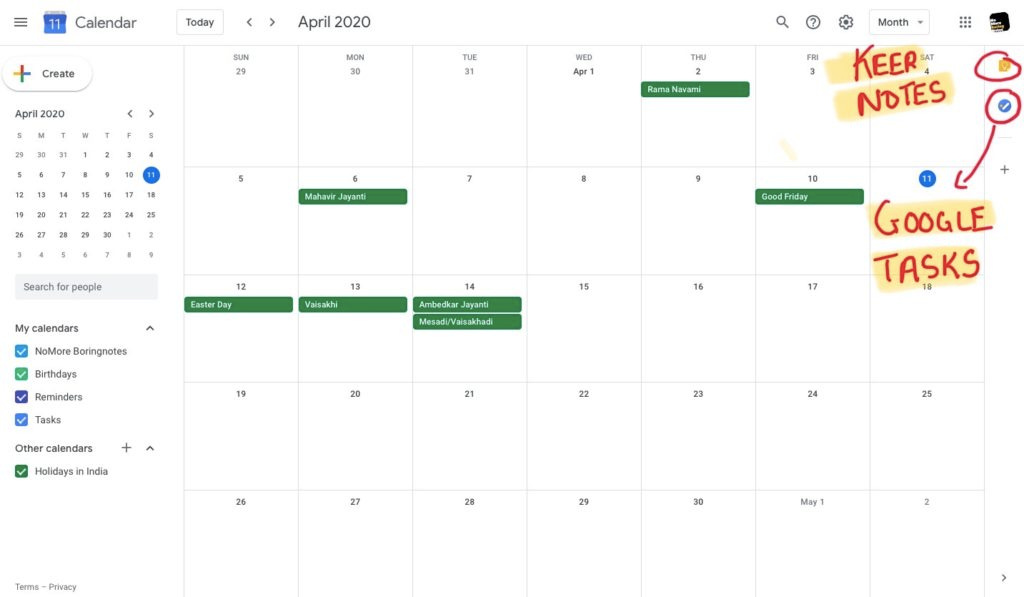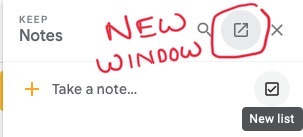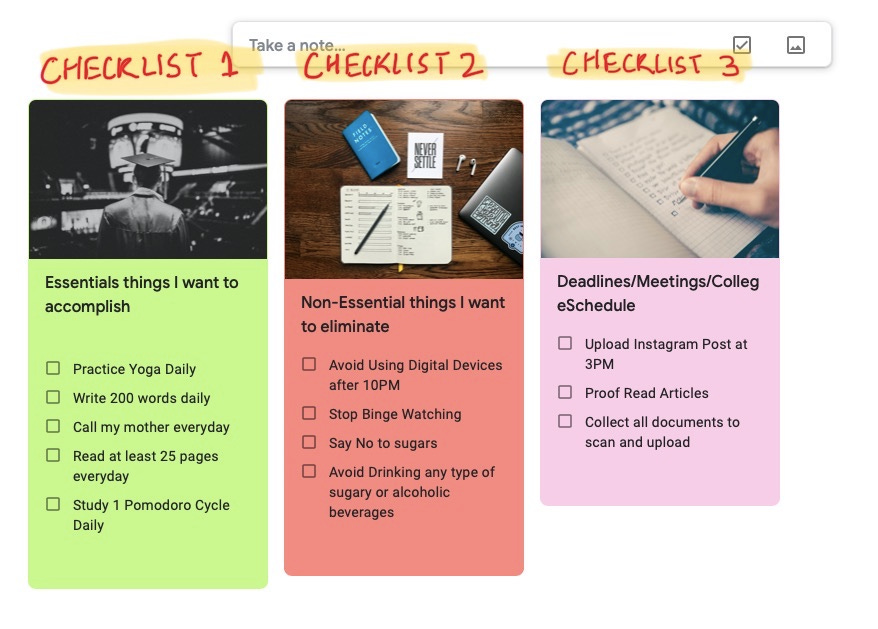How To Organize Your Day Using Google Calendar
An Essentialist Guide To Using Google Calendar To Organise Your Day
"If you don't prioritize your life, someone else will."
Task management, planning, and scheduling are life skills. But when you have just entered college and started enjoying the randomness of life, it seems counterintuitive to invest time organizing your life.
There is no better age to learn these skills if you want to get ahead of others. On the contrary, if you plan everything, you will be able to squeeze out more time for fun activities without having to compromise on studies and other essential tasks.
It becomes quite intimidating for those starting on this journey because there are so many ways to do it. There are calendar apps, to-do-lists, notetaking apps, habit trackers, sleep trackers, water intake trackers, and the list goes on. Trying to grasp too many things at once makes your situation even worse. Thus, it is vital to choose the minimal number of tools and utilize them to the maximum.
But, before diving in, let's talk quickly about the Essentialism philosophy.
This how Greg McKeown, author of one of my favorite books 'Essentialism' describes it-
"The Way of the Essentialist isn't about getting more done in less time. It's not about getting less done. It's about getting only the right things done. It's about challenging the core assumption of 'we can have it all' and 'I have to do everything' and replacing it with the pursuit of 'the right thing, in the right way, at the right time.' It's about regaining control of our own choices about where to spend our time and energies instead of giving others implicit permission to choose for us."
Thus, while planning and scheduling, you must follow three simple steps to develop an essentialist way.
1. Deciding what matters
"If you don't have time, the truth is, you don't have priorities."
One of the reasons we crib about med school so much is because, at this young age, we develop so many interests apart from studying medicine like travel, music, photography, art, reading, writing. But because there is so much to study, we don't get enough time to pursue our interests.
Ask yourself. Are you really that busy?
The truth is, your schedule is so cluttered with nonessential things that you can't find time for what you love. Maybe you wanted to learn guitar or piano, or you wanted to paint more. These are your priorities, which you should invest more time in.
The first principle of Essentialism is to prioritize the essential tasks in your life, which take you closer to the person you want to be. These tasks should be added first in your schedule.
2. Eliminating Non-essentials
There are many things in life you might think are essential, or you are doing it because of a sense of social obligations but are not the most essentials. Maybe you are attending too many parties, drinking too much, or wasting time on Netflix. Make a list of all the things you are over-investing in. I am not asking you to eliminate all these things completely. I am just asking you to invest a little less on nonessentials. Figuring out what's best for you is a part of efficient scheduling.
3. Putting it all in an efficient system.
The planning and scheduling should be such so as to remove as much friction from the workflow as possible. As a beginner, that is important so that you can enjoy a stress-free and productive life. Creating a system that is easy and efficient is the most critical aspect of productivity.
That is when Google Calendar kicks in.
Google has given us the most straightforward workflow to plan, schedule, and organize our day to day tasks. With the integration of Google Calendar with Google Tasks and Keep Notes, everything has become so smooth that you won't actually have to look any further.
So, let us learn how to plan your college life with these google tools keeping in mind the philosophy of Essentialism.
If you are using a computer, simply open google calendar (calendar.google.com) from any browser (chrome, safari, etc.) and log in with your account. You will see a window like this with Calendar in the main window and Keep Notes and Google Tasks in the sidebar.
(I highly recommend you to use your computer for it.)

If you are using a smartphone, you will have to Download Keep Notes, Tasks apps, and Google Calendar (if you are an iOS user) from the play/App Store. Once you do it, follow these steps.
Creating Checklists in Google Notes
Importing Checklists into Google Calendar
Managing To-do-lists with Google Tasks
Reviewing daily, weekly and monthly
Step 1 - Creating Checklists in Google Notes
Remember, the core idea is to invest in essentials and eliminate nonessentials. We will create checklists for that in Google Notes.
Go to the 'Keep Notes Icon in the right-hand corner' —> Click on the New Window Icon —> Click on 'Add List.' (You can also add an image and give a specific color to each list)

Checklist Number 1
Essentials things I want to accomplish
Include anything that
You genuinely desire to learn
You are obligated to do
Lifestyle changes you want to make
Checklist Number 2
Nonessential things I want to eliminate
Here, write down all the things you things are not necessary. Especially Include the bad habits you want to change.
Checklist Number 3
Deadlines / Meetings / College Schedules
This is the place where you
Upload the schedule of your classes
Add deadlines of assignments and projects
examination dates
important meeting

So once you are done, your Keep Notes would look something like this.
(Remember, I have added the items on the lists just to give you an idea. Your listing should be extensive, with every detail possible. So that you can schedule everything properly.)
Step 2 - Importing Checklists into Google Calendar
Once you have the idea of what is essential and what is not, start adding this information to your google calendar.
So, the sequence goes like this.
Add all the items from Checklist 3, i.e. Your upcoming deadlines, meeting, classes, and exams.
Add your essential things ( like Gym, Music classes, Writing, Reading, etc.) into your daily and weekly schedule first. Also, add your Morning and Evening routine here only.
Secondly, add your study schedule according to your classes and exams.
(Pro Tip - There is a concept of Energy Management in productivity. One of the key ideas is to identify the time blocks where you feel most energetic, focused, and motivated. For example, - I am most focused between 10 AM to 1 PM, which is when I am writing this article. Devote this time block for your important tasks like studies so that you can get the most out of it.)
Analyzing the time blocks which are free so that you can schedule it for fun activities and the nonessential things which you love (like Netflix and Parties)
When you follow this simple framework, you make sure that you have covered everything necessary before investing time in the nonessentials.
(Here is a short video on how to use google calendar)
[embed]https://youtu.be/4okhgx55Mjg[/embed]
Step 3 - Managing To-do-lists with Google Tasks
Once the listing and scheduling are done, the next step is to create a to-do-list. You have to create the to-do-list, keeping in mind your Calendar and Notes. I suggest you create a to-do-list the night before or first thing in the morning before leaving the house/dorm room.
Let's say; your Calendar shows that you have Grocery Shopping coming tomorrow. Keeping that in mind, you can create a list of all the items you want to purchase during shopping and add it to Google Tasks.

Similarly, you can add all the things that you want to get done on that day. This way, you will forget less and accomplish more.
One of the most useful functions of Tasks is that you can sync everything between computers and smartphones. So before leaving the house, you can setup up your list, which you can easily access via smartphone during the day.
(You can add date and time to the tasks to add to directly to your Calendar)
(Here is an example)

You might be wondering why I am using Tasks and not Notes to create a To-Do-List. That is because creating it in Notes will clutter the app with day to day tasks. Tasks is specifically designed to capture everything quickly and efficiently. Notes are mainly used to capture ideas.
Let's you get a recommendation from your friend for a Book or an Article. You can add those things to your Notes in a separate "To-Read" note.
But if you are given a task to complete by your professor (like getting printouts of conveying a message to someone), you can add it directly to your notes.
Step 4 - Review and Analysis
If you have read our article on Deliberate Practice, you know that one of the components of an effective planning system is Feedback and Analysis.
Take out time to see what worked for you and what didn't. How many tasks were you able to complete. Analyze the reasons why you were not able to complete a task and what changes you must make in your schedule to get things done.
When you first create a schedule, it is likely that you won't be able to finish everything. That is because we tend to overestimate ourselves and fall onto the trap of Planning Fallacy. We shall talk about it some other day. For now, my advice would be to take it slow. Don't clutter your Calendar. Give enough time to finish everything. Take out time to chill out and relax. Don't schedule like a robot, shifting from one task to the other. Sleep, nutrition, relaxations, everything is equally important.
Keep Notes will help you focus on the essentials. The Calendar will give you a birdseye view of your days, weeks, and months so that you get the bigger picture of what's ahead. Google task helps you create the list of things you want to get done so that you don't miss out on any of the important stuff.
If you are using a smartphone, you will have to download these apps separately, and the rest is the same. If you are a Pen and Paper guy, you just have to replace Notes with a diary/journal, Google Calendar with a physical one and Tasks with a pocket letter pad and you are good to go.
That's it for now. Go on. Try it yourself. If you face any issues, reach out to us on the comment section or our social handles.
See you soon!
Ciao
Recommended Readings
Book " Essentialism - by Greg McKeown"


